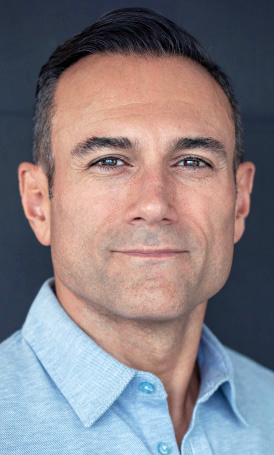

 A lot of pixels have been spilled lately over an Internet records retention bill recently introduced in both the House and the Senate. The goal is to fight child pornography. That's a worthwhile goal; however, I think these bills will do little to further it. Worse yet, I think that at least two of the provisions of the bill are likely to have bad side effects... more
A lot of pixels have been spilled lately over an Internet records retention bill recently introduced in both the House and the Senate. The goal is to fight child pornography. That's a worthwhile goal; however, I think these bills will do little to further it. Worse yet, I think that at least two of the provisions of the bill are likely to have bad side effects... more
 As reported last July, there is a proposal from some Flemish politicians to create a .vla top level domain under the new gTLD process launched by ICANN. The proposal further elaborated that the Flemish government would have to cover the costs. Not so fast, says the Flemish government... more
As reported last July, there is a proposal from some Flemish politicians to create a .vla top level domain under the new gTLD process launched by ICANN. The proposal further elaborated that the Flemish government would have to cover the costs. Not so fast, says the Flemish government... more
 According to National Journal, Susan Crawford is joining the Obama administration in a significant new role... This does not make me happy. Crawford is not a technologist, and the job that's been created for her needs to be filled by a person with deep knowledge of technology, the technology business, and the dynamics in research and business that promote innovation... more
According to National Journal, Susan Crawford is joining the Obama administration in a significant new role... This does not make me happy. Crawford is not a technologist, and the job that's been created for her needs to be filled by a person with deep knowledge of technology, the technology business, and the dynamics in research and business that promote innovation... more
 During the recent ICANN Board meeting in Mexico City, the Board authorized the creation and funding of an Implementation Recommendation Team (IRT). This team was to be comprised of "an internationally diverse group of persons with knowledge, expertise, and experience in the fields of trademark, consumer protection, or competition law, and the interplay of trademarks and the domain name system to develop and propose solutions to the overarching issue of trademark protection in connection with the introduction of new gTLDs." more
During the recent ICANN Board meeting in Mexico City, the Board authorized the creation and funding of an Implementation Recommendation Team (IRT). This team was to be comprised of "an internationally diverse group of persons with knowledge, expertise, and experience in the fields of trademark, consumer protection, or competition law, and the interplay of trademarks and the domain name system to develop and propose solutions to the overarching issue of trademark protection in connection with the introduction of new gTLDs." more
 Just in time for Ada Lovelace Day comes the news that Susan Crawford (Wikipedia, CircleID) is headed to the White House as special assistant to the president for science, technology, and innovation policy... more
Just in time for Ada Lovelace Day comes the news that Susan Crawford (Wikipedia, CircleID) is headed to the White House as special assistant to the president for science, technology, and innovation policy... more
 In most of Europe, mobile network operators (MNOs) have largely completed their 3G network roll outs. During the last year or two their focus has been on upgrading these networks with new technologies, including femtocell and, importantly, HSPA. Following trials expected to be held during 2010, LTE will soon be sufficiently advanced for commercial launches. This will provide significant opportunities for Europe's market for convergent services, adding a new platform for delivering a range of media... more
In most of Europe, mobile network operators (MNOs) have largely completed their 3G network roll outs. During the last year or two their focus has been on upgrading these networks with new technologies, including femtocell and, importantly, HSPA. Following trials expected to be held during 2010, LTE will soon be sufficiently advanced for commercial launches. This will provide significant opportunities for Europe's market for convergent services, adding a new platform for delivering a range of media... more
 Nearly ten years ago, the Government of Canada wrote a letter to the chair of the Canadian Internet Registration Authority (CIRA) that set out the framework for the management of the dot-ca domain. The government articulated a vision of the dot-ca domain as a “key public resource” and called on CIRA to act in an open and transparent manner. CIRA has long sought to live up to those standards, but in recent months the organization has shown an unmistakable shift toward prioritizing commercial gain over the public interest along with a troubling move toward secret decision making... more
Nearly ten years ago, the Government of Canada wrote a letter to the chair of the Canadian Internet Registration Authority (CIRA) that set out the framework for the management of the dot-ca domain. The government articulated a vision of the dot-ca domain as a “key public resource” and called on CIRA to act in an open and transparent manner. CIRA has long sought to live up to those standards, but in recent months the organization has shown an unmistakable shift toward prioritizing commercial gain over the public interest along with a troubling move toward secret decision making... more
 Throughout this series of articles we've been talking about DKIM, and what a valid DKIM signature actually means. .. What this means for senders (of any type) is that with DKIM, you’re protected. On the internet, your domain name is a statement of your brand identity – so by signing messages with DKIM, you can finally, irrevocably tie those messages to your brand. more
Throughout this series of articles we've been talking about DKIM, and what a valid DKIM signature actually means. .. What this means for senders (of any type) is that with DKIM, you’re protected. On the internet, your domain name is a statement of your brand identity – so by signing messages with DKIM, you can finally, irrevocably tie those messages to your brand. more
 The Internet as we know it and use it today -- is broken, badly broken. Yes broken so much so that we are really crazy to have any expectations of privacy or security. Yes, really. The Internet was conceived as somewhat of a utopian environment, one where we all keep our doors, windows and cars unlocked and we trust all the people and machines out there to "do the right thing...". more
The Internet as we know it and use it today -- is broken, badly broken. Yes broken so much so that we are really crazy to have any expectations of privacy or security. Yes, really. The Internet was conceived as somewhat of a utopian environment, one where we all keep our doors, windows and cars unlocked and we trust all the people and machines out there to "do the right thing...". more
 This article is the first in an occasional series on DKIM/ADSP edge cases that may not be generally recognized or understood. Many people advocate DKIM/ADSP adoption without fully recognizing potential implementation and operational issues. The fact is that the email messaging environment is fraught with opportunities for poor outcomes because of common practices that need to be considered or poorly understood implementations that are not considered... more
This article is the first in an occasional series on DKIM/ADSP edge cases that may not be generally recognized or understood. Many people advocate DKIM/ADSP adoption without fully recognizing potential implementation and operational issues. The fact is that the email messaging environment is fraught with opportunities for poor outcomes because of common practices that need to be considered or poorly understood implementations that are not considered... more
 ENUM (E.164 NUmber Mapping) is a technology that has been around for a little while that has promised much and, so far, delivered little to the average user. As Nominet has recently been awarded the contract to administer the UK 4.4.e164.arpa delegation, I thought it was time that I put my thoughts on this subject down in writing. I'm going to cover the potential of ENUM in the telecoms industry and what it could mean to you, along with how it is currently being used and what potential security issues surround ENUM. more
ENUM (E.164 NUmber Mapping) is a technology that has been around for a little while that has promised much and, so far, delivered little to the average user. As Nominet has recently been awarded the contract to administer the UK 4.4.e164.arpa delegation, I thought it was time that I put my thoughts on this subject down in writing. I'm going to cover the potential of ENUM in the telecoms industry and what it could mean to you, along with how it is currently being used and what potential security issues surround ENUM. more
 Once you've determined that you can trust the signer of a message, as we discussed in part 3, it's easy to extrapolate that various portions of the message are equally trustworthy. For example, when there's a valid DKIM signature, we might assume that the From: header isn't spoofed. But in reality, DKIM only tells us two basic things... more
Once you've determined that you can trust the signer of a message, as we discussed in part 3, it's easy to extrapolate that various portions of the message are equally trustworthy. For example, when there's a valid DKIM signature, we might assume that the From: header isn't spoofed. But in reality, DKIM only tells us two basic things... more
 In this multipart series I will be presenting some of the leading industry-standard best practices for enterprise network security using Cisco technologies... In Part 3 of this series I began to discuss Cisco technologies as a standard for enterprise data security. In this article we take a look at how Cisco firewall and packet filtering technologies can be used at the network perimeter to enhance enterprise security. more
In this multipart series I will be presenting some of the leading industry-standard best practices for enterprise network security using Cisco technologies... In Part 3 of this series I began to discuss Cisco technologies as a standard for enterprise data security. In this article we take a look at how Cisco firewall and packet filtering technologies can be used at the network perimeter to enhance enterprise security. more
 Earlier this month, I had the opportunity to attend the The Emerging Communications (eComm) 2009 conference in San Francisco which was packed with 3 days of fascinating conversations about the future of communications. I absolutely enjoyed talking to various speakers and attendees giving me a deep level of appreciation and perspective on technical, commercial and political issues at hand -- and what is likely to come in the next few years. And speaking of politics, Lee Dryburgh, who founded eComm in early 2008, has generously allowed us to share with you a fascinating panel discussion which took place on day 3 of the conference called "Spectrum 2.0 - What's really happening?" more
Earlier this month, I had the opportunity to attend the The Emerging Communications (eComm) 2009 conference in San Francisco which was packed with 3 days of fascinating conversations about the future of communications. I absolutely enjoyed talking to various speakers and attendees giving me a deep level of appreciation and perspective on technical, commercial and political issues at hand -- and what is likely to come in the next few years. And speaking of politics, Lee Dryburgh, who founded eComm in early 2008, has generously allowed us to share with you a fascinating panel discussion which took place on day 3 of the conference called "Spectrum 2.0 - What's really happening?" more
The IANA -- Internet Assigned Numbers Authority -- is, functionally, the boiler room of the Internet. Every protocol in use to shovel data from Tallahassee to Timbuktu? Listed there. IP addresses? They are the root from which all addresses flow. Domain names? They are the Source. The entire operation is chock-full of magic numbers, numbers that form and fuel the digital world we use daily. But there are other, lesser-known numbers... It is of PENs that I write today... more
Sponsored byVerisign

Sponsored byWhoisXML API

Sponsored byIPv4.Global

Sponsored byCSC

Sponsored byRadix

Sponsored byVerisign

Sponsored byDNIB.com
